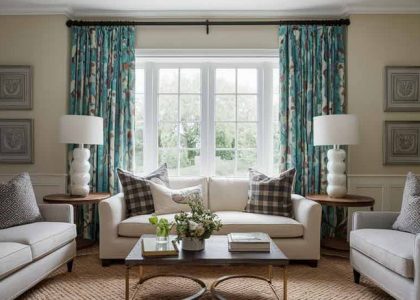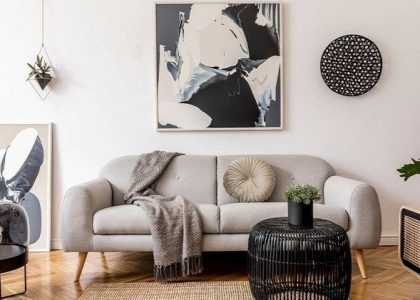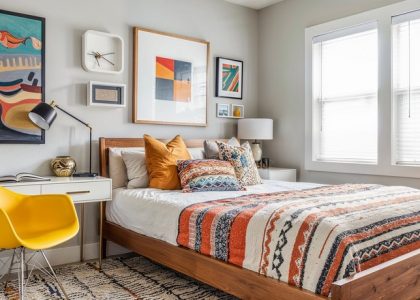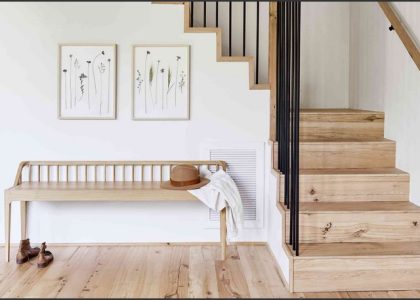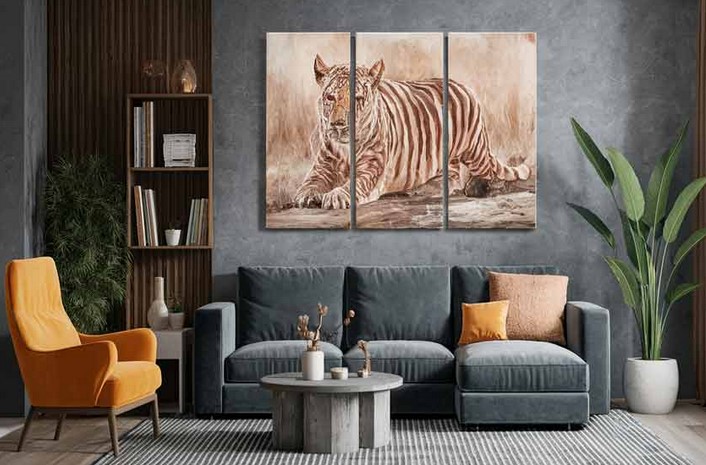
Interior design is evolving beyond furniture and layout—today, it’s about infusing personality, style, and emotion into every corner of your home. One of the most effective ways to elevate your living space is through modern wall art. Far more than mere decoration, wall art serves as a visual anchor, enhancing a room’s aesthetic and reinforcing its design narrative. From abstract pieces to mixed media installations, modern wall art has the power to transform a bland wall into a statement feature. In this article, we explore contemporary wall art concepts, practical placement ideas, and a new technological twist on this classic design element.
1. Understanding the Essence of Modern Wall Art
Modern wall art reflects current artistic expressions and often emphasizes simplicity, boldness, and innovation. While traditional art tends to focus on realism or classical themes, modern art breaks boundaries with abstract designs, conceptual themes, and unconventional materials.
a. Key Characteristics of Modern Wall Art
- Minimalist and Bold: Clean lines, monochromatic palettes, or vibrant splashes of color often characterize modern pieces.
- Abstract and Conceptual: Modern art frequently embraces abstract forms and symbolic content that invites interpretation.
- Innovative Mediums: Materials like metal, acrylic, recycled objects, and digital media are now commonly used.
- Versatility: Suitable for every room, from the living room to the hallway or home office.
Modern wall art doesn’t have to be expensive or created by a famous artist. What matters most is that it resonates with the space and the people who inhabit it.
2. Popular and Emerging Wall Art Styles
Choosing the right wall art depends on the room’s purpose, size, and existing decor. Here are several trending and timeless approaches to consider:
a. Large-Scale Statement Pieces
Oversized canvases or framed art make a bold visual impact. Ideal for living rooms or entryways, these pieces become the focal point of a space. Abstract patterns, bold brushstrokes, or black-and-white photography often work well in this format.
b. Gallery Walls
Gallery walls allow for creativity and personalization. Combine various frames, photographs, art prints, and even memorabilia in a cohesive arrangement. Keep a consistent theme—either in color, frame style, or subject matter—to maintain visual harmony.
c. Mixed Media and 3D Installations
For a more tactile and dynamic look, mixed media installations can incorporate wood, metal, fabric, or glass elements. These pieces add depth and intrigue to otherwise flat walls and are particularly effective in modern and industrial interiors.
d. Digital Art Frames
Digital art frames are revolutionizing how art is displayed. These Wi-Fi-connected frames can rotate through different artworks, giving you the freedom to update your decor without physical changes. Some allow uploads of your own photos or display curated content from global artists.
e. Nature-Inspired and Sustainable Art
Eco-conscious consumers are gravitating toward wall art made from natural or upcycled materials. Pressed botanicals, reclaimed wood panels, or art featuring environmental themes are not only aesthetically pleasing but also align with sustainability values.
3. A New Idea: Interactive Smart Wall Art
As technology continues to shape interior design, a novel concept is emerging—interactive smart wall art. These innovative pieces blend design, technology, and interactivity to offer a customizable and dynamic experience.
a. What Is Interactive Smart Wall Art?
Unlike static art, smart wall art integrates LED technology, motion sensors, and smart home connectivity to respond to the environment or user inputs. These pieces can change color, pattern, or imagery based on mood, time of day, or voice commands.
For instance, an LED-based abstract artwork might glow with cool hues in the morning and shift to warmer tones in the evening. Others may react to music, mirroring rhythms and beats with synchronized visuals.
b. Integration with Smart Home Systems
Interactive wall art can be linked to existing smart home systems. When connected to a home assistant, you could say, “Set art to relax mode,” and the artwork would adjust its tones and animations to create a calm atmosphere. This feature is ideal for bedrooms, meditation spaces, or home theaters.
c. Personalized Artistic Experiences
With embedded AI and display technology, users can create or upload their own digital art to be shown on the smart canvas. Over time, the system can learn user preferences and offer curated suggestions, ensuring the display always aligns with the desired ambiance.
d. Benefits and Appeal
- Adaptability: Change your environment without physical renovations.
- Mood Enhancement: Use color therapy or kinetic visuals to positively impact emotional well-being.
- Space Optimization: Combine art with lighting and decor functionality in one sleek installation.
This fusion of creativity and innovation is redefining how we engage with art, making it not only a visual feature but also a dynamic, responsive part of the living environment.
Conclusion
Incorporating modern wall art into your home is more than a design choice—it’s an opportunity to express personality, foster emotional connection, and enhance spatial harmony. With options ranging from large canvases to interactive smart installations, today’s wall art offers endless possibilities for creative expression. Whether your goal is to make a bold statement or to subtly elevate your space, modern wall art provides a versatile and transformative tool for achieving a sophisticated, personalized home environment.

